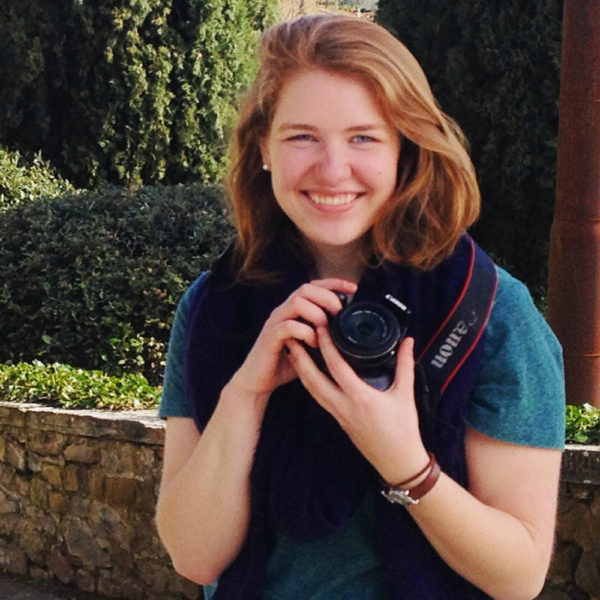Advertisement
A Polluted Pond In Cambridge Is Poised For Cleanup — But Its Future Is Under Debate
Resume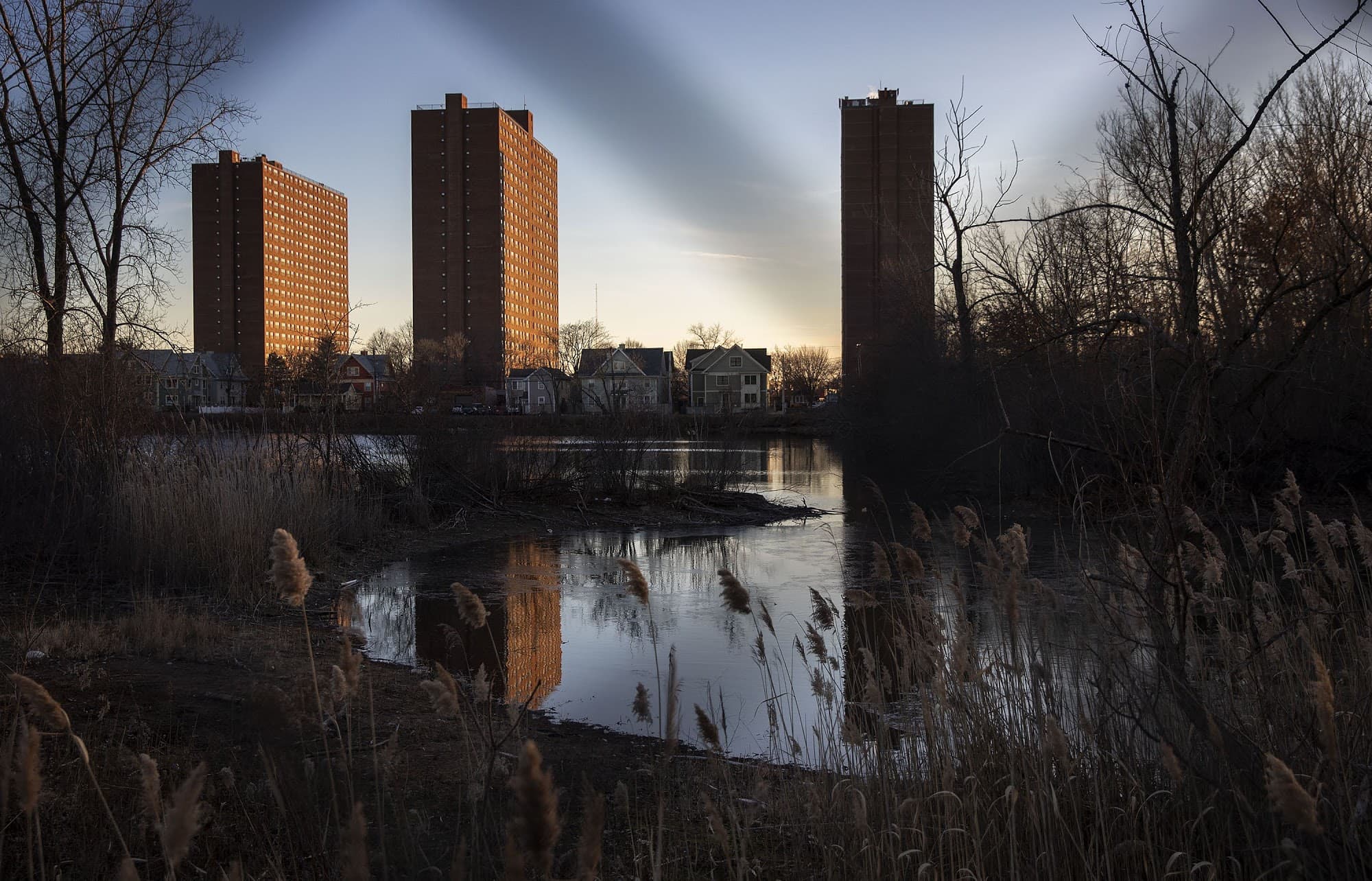
“Make me a park!”
The message is written on posters taped to a 6-foot chain-link fence. And shouted, loudly, by Lewis Weitzman, a resident of Cambridge.
Weitzman is shouting about Jerry’s Pond — a fenced-off pond completely closed to the public, sandwiched between the Alewife T Station and Russell Field in North Cambridge. He's at the pond on a fall day, running a clean-up event with Friends of Jerry’s Pond, a community group he co-founded with Eric Grunebaum.
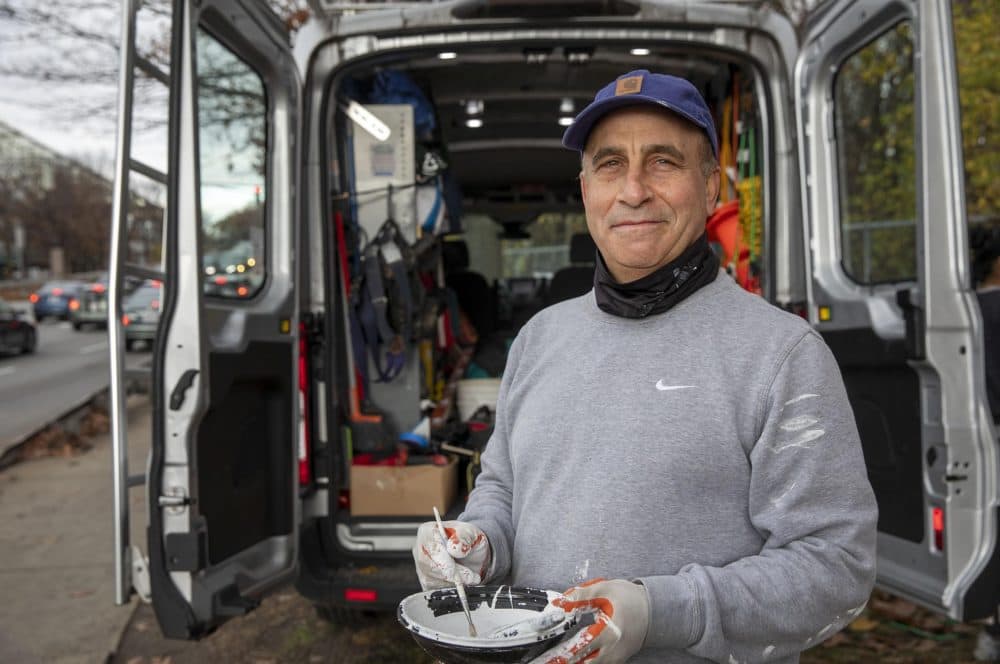
“We could create a lot more space here,” says Grunebaum, “and that space could be used for off-road bike paths, meandering nature walks, some boardwalks through the woods. It would improve the natural landscape, but also give people access to it.”
One of the hurdles to that dream? The pond is likely toxic, since it's part of an area once owned by chemical companies. Asbestos and other contaminants have been found in the ground and in the water.
Past campaigns have been stalled because the land is still privately owned. But this year the momentum shifted; a life sciences real estate developer bought the site, and the Cambridge City Council started public hearings, giving community members some hope about the future of Jerry's Pond.
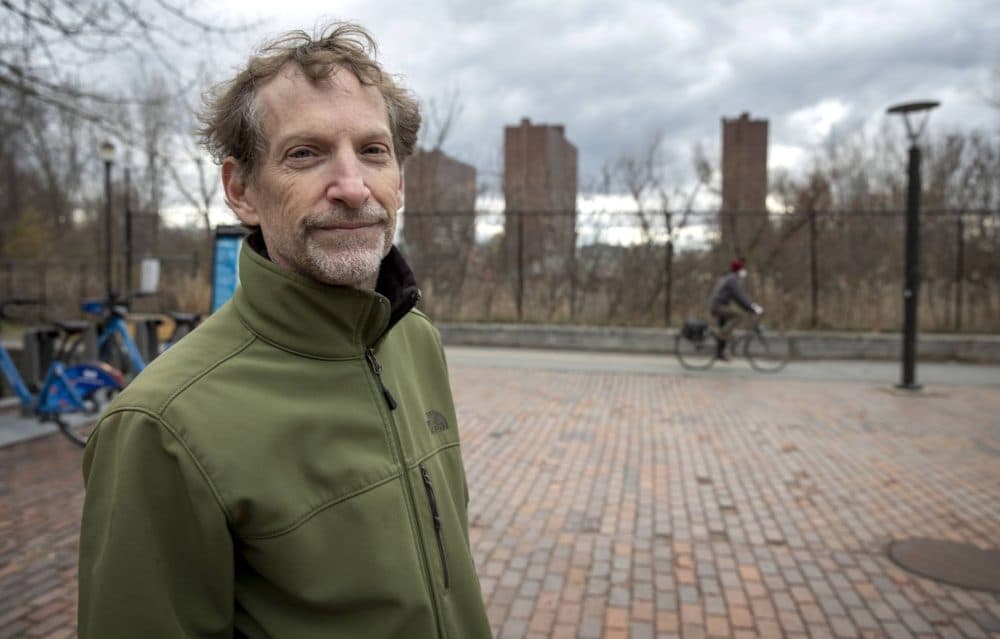
At the cleanup event, Grunebaum and Weitzman are helping organize a group of teenagers who came to help. They’re there as part of the mayor’s youth employment program, and several live nearby.
“When I first walked by it, I feel like [there’s] something that’s missing there, you know?” said 16-year-old Oaisharja Barua. “I don’t know why there’s a fence.”
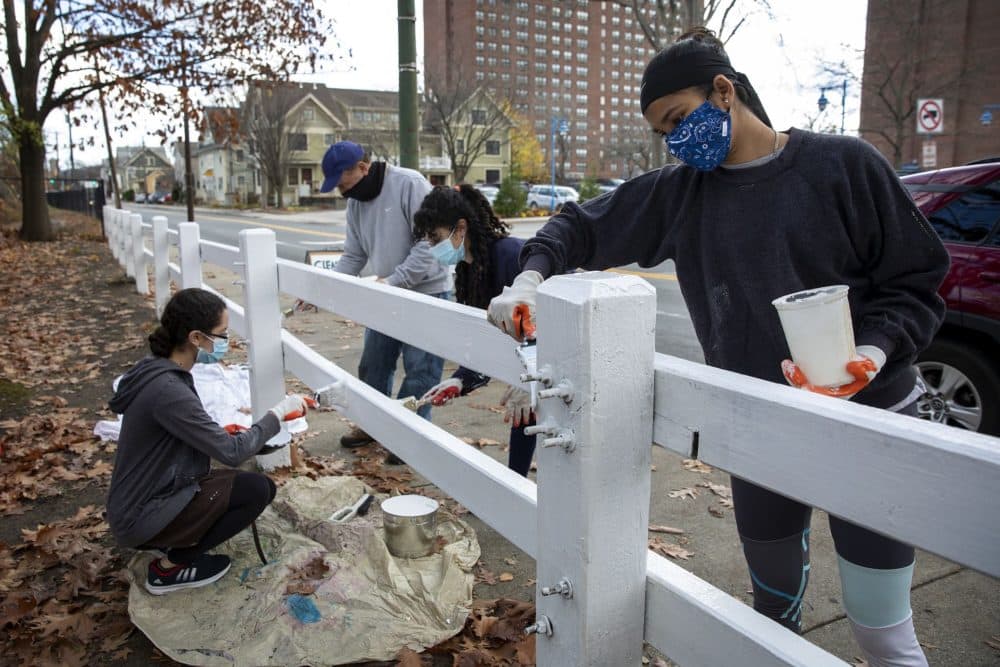
Abrar Hoque, 15, has the same question. “I just wonder what’s going on with this place. I know people tried cleaning it up before.”
Hoque lives directly across the street, by the Rindge Towers. These three, 22-story buildings provide hundreds of units of affordable housing; the neighborhood has the highest density of those units in the city.
"It's no coincidence that a toxic-waste-contaminated site is right across the street from [thousands of] low income residents,” Weitzman says. "If this had been a wealthier part of town ... the site would have been dealt with long, long ago.”
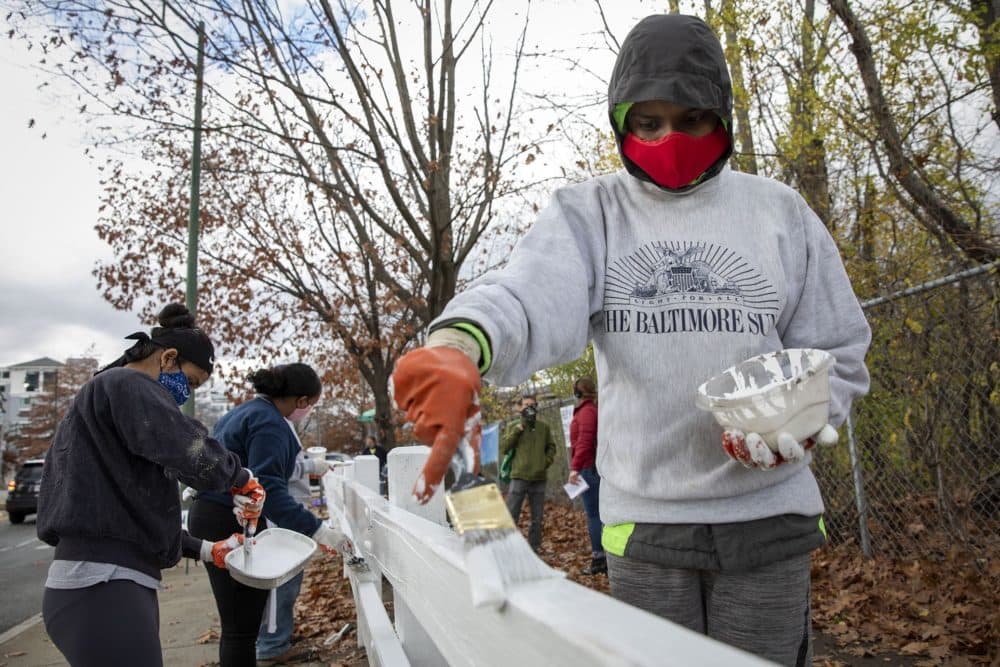
Anusha Alam, 19, also wants to see a change at the pond. She lived in the Rindge Towers until seven or eight years ago, and now lives in a smaller building right next door.
“I’ve seen that my whole life, and I’ve always wanted it to be better,” she says of the pond. “If we can actually get that vision done of having a boardwalk across the pond, a bunch of vibrant flowers ... growing up in this environment, I feel like it would have been amazing if I had the chance to do all that stuff as a kid.”
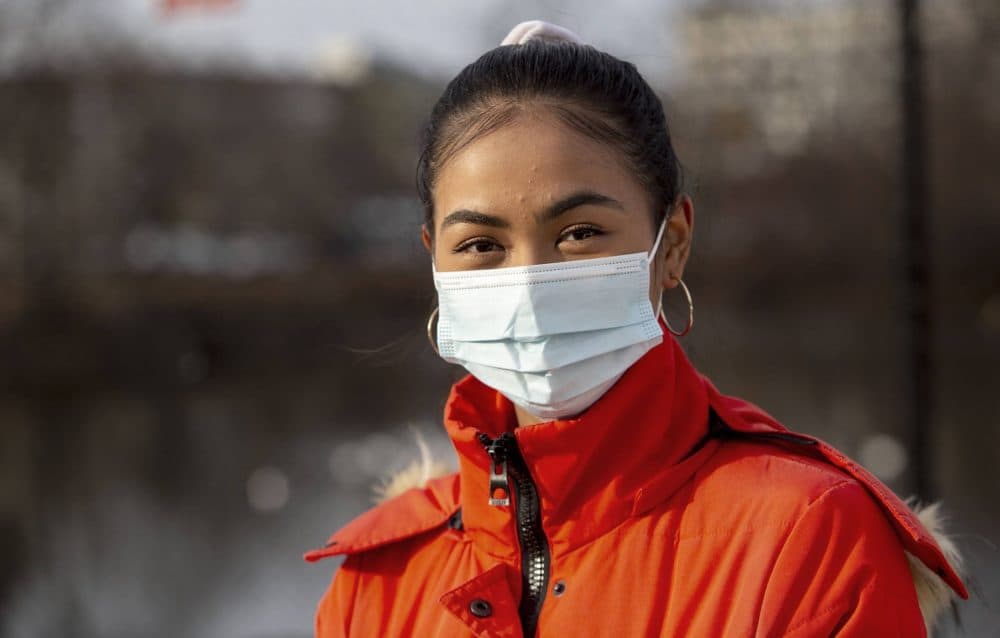
Alam is now a freshman at UMass Lowell. But since she's been taking her classes remotely because of the pandemic, she's been able to volunteer with Friends of Jerry’s Pond this year.
Her goal is to make sure people who live in the towers have a say in the project.
“We want to make sure the people here also agree with it,” she says, noting that the neighborhood is home to Bengali, Somali, Ethiopian and Latino communities, among others. “Our biggest plan is to reach out to people who are kind of like me and have connections to people around the towers."
'It Was The Place To Go'
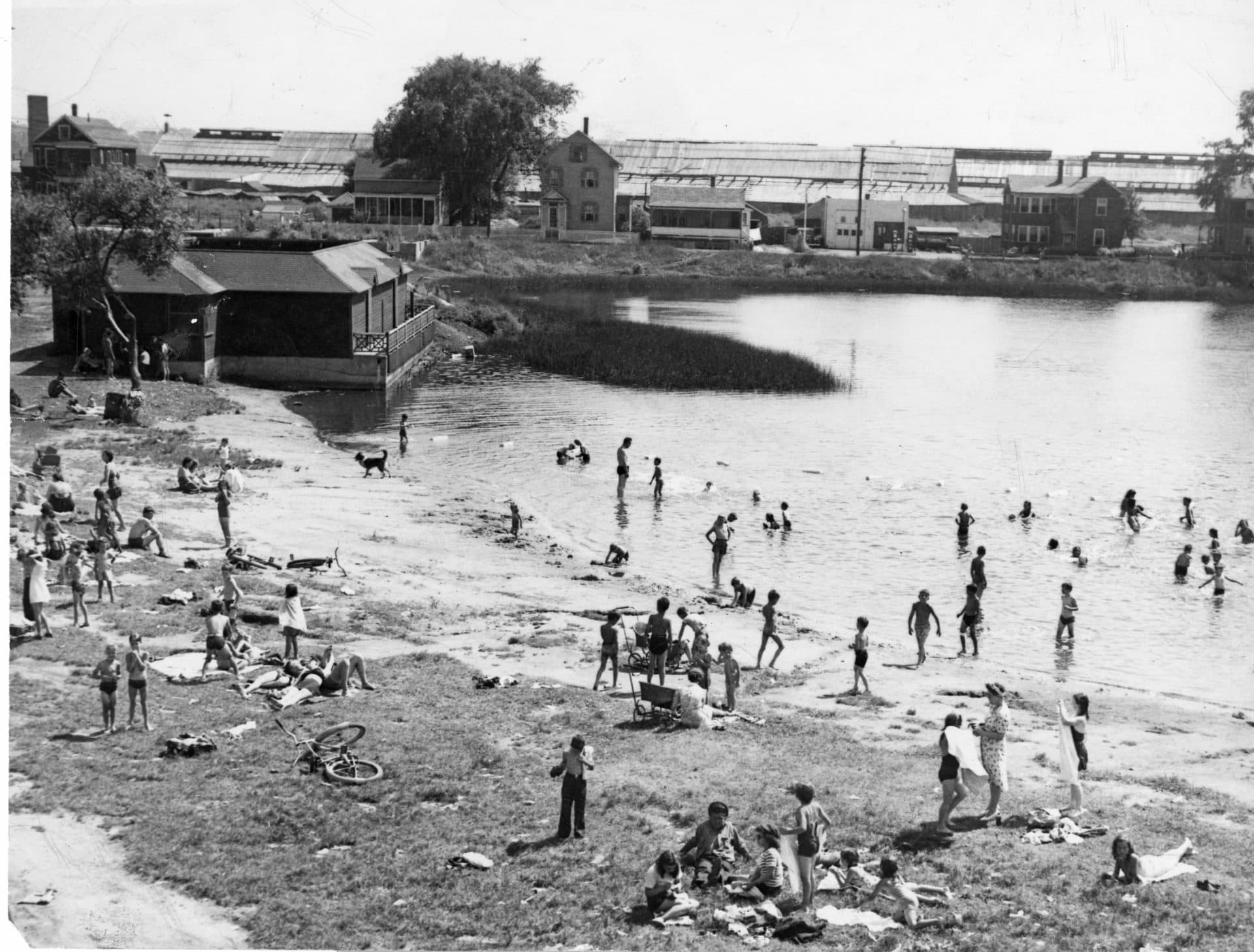
About 100 years ago, Jerry’s Pond was a popular swimming area. Historical photos show dozens of people in the water, and hanging out by a bathhouse.
“It was the place to go,” said John Doucet, a Cambridge resident and co-founder of Friends of Jerry’s Pond.
Doucet's father became a lifeguard at the pond when he returned from World War II.
“[For] the whole neighborhood,” he says, “and in fact most of Cambridge, if you didn’t have a lot of money and you couldn’t get away, this is where you came.”
Jerry’s Pond started as a clay pit in the 1800s, and became a pond when there was nothing left to excavate. Then the Dewey & Almy Chemical Company owned the land and operated a plant north of the pond in the early 1900s. An EPA report from 2000 notes the company was believed to be using asbestos on site in a brake-lining development program.
In 1954, Dewey & Almy merged to become part of the larger chemical company W.R. Grace. Grace is infamous for chemical pollution. In Massachusetts they have been linked to water pollution in Woburn, and the EPA superfund site in Acton.
According to the EPA report, under W.R. Grace the North Cambridge site was used to manufacture a variety of chemicals throughout the late 1900s, and was also used for on-site lab analysis and research on fireproofing material that contained asbestos in the late 60s and 70s.
By the time the fence went up around the pond in 1961, chemical work had been underway for decades.

Federal regulators and local partners have surveyed and tested the area several times, including the initial soil sampling conducted by W.R. Grace in 1998 and then both soil and water sampling. Soil samples regularly returned results of asbestos contamination; water sampling conducted on behalf of W.R. Grace in 2006 and submitted to the Massachusetts Department of Environmental Protection found asbestos in three of the four samples.
The 2006 study also included a few locations on the pond's banks, and did not find any asbestos.
But according to community advocates with the Alewife Study Group, the testing has not included the sediment at the bottom of the pond.
“There is contamination very close to Jerry’s Pond on the northeast side,” says David Bass, a member of the study group and former hazardous waste assessment and remediation engineer. “There’s some on the west side. And you will see that the entire southern portion, the southern half of the banks of Jerry's Pond, have never been sampled and evaluated for asbestos.”
Asbestos is safe as long as it stays buried, and Bass says that's the critical point. He and the Alewife Study Group are concerned that cleaning up the site incorrectly could make the asbestos airborne, endangering the popular Russell Field next door.
The group is also concerned about flooding. The entire plot of land sits in a floodplain that was once the Great Swamp. According to the Alewife Study Group, making changes to the level and porousness of the ground through capping or excavation will change where floodwaters go during a storm, likely forcing them into the inhabited parts of the neighborhood.
'Deciders Of What Happens Here'

The biggest question mark about the future of Jerry’s Pond is the new owner.
This summer, life sciences real estate developer IQHQ bought the site from W.R. Grace.
In a statement to WBUR, the company said, “We are well aware of interest in improvements to Jerry’s Pond as well as the interest in the entire site. The site has a complex history and we have yet to finalize plans for our development or begin the public process.”
Last week at a city council hearing about the pond and its new ownership, a local representative for the company said they are open to improvements and are looking forward to working with community members and organizations.
But during the hearing's public comment period, Jefferson Park resident James Williamson criticized those organizations, the city and the company for their approach. He said the parties involved are not doing enough to reach out and listen to the affordable housing communities they are claiming to help.
“People talk about the people who live in places like Jefferson Park or in the towers, but nobody ever really listens very much,” he said, “or it doesn’t seem like there’s much effort, and it’s not all that hard, I don’t think, to include us or to listen to us.”
Alam shares his concern, and says she is committed to making sure the community has a say.
“We want us to be the deciders of what happens here,” she says, “because this is what we are going to be seeing and passing all the time, not people from Somerville or Medford or East Cambridge.
"We want this to be a place the community here is proud of."
This segment aired on December 18, 2020.
